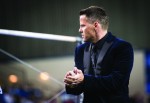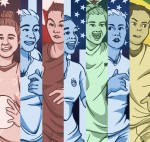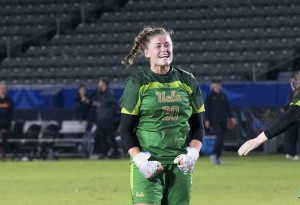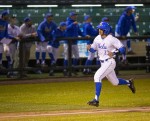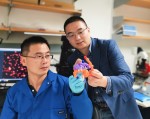UCLA gymnastics welcomed a trio of new hires to its 2020 coaching staff.
The Bruins announced the final addition to their staff Tuesday – volunteer assistant coach BJ Das. Also joining UCLA gymnastics are former Bruin coaches Kristina Comforte as associate head coach and Dom Palange as assistant coach.
“They all just felt right,” said coach Chris Waller. “The three coaches filled all the gaps that we needed filled in wonderful ways, and I think that together we are going to be even greater than the sum of our parts.”
Comforte competed for the Bruins from 2006 to 2008. During her time with UCLA, she was a five-time All-American and an NCAA regional individual title holder. As a senior, Comforte transitioned from student-athlete to undergraduate assistant coach for the Bruins, and was on the coaching staff when the Bruins took home their sixth-ever national title in 2010.
Comforte spent time as a club gymnastics coach in Florida and as a vault and floor coach at Illinois following her graduation from UCLA.
The role of associate head coach was previously filled by Randy Lane, who is not currently on the 2020 coaching roster.
“Having been through this program as an athlete and having been here as an undergraduate assistant coach, I know that (Comforte) understands what Bruin culture is all about,” Waller said. “(She has) coached college gymnastics and club gymnastics, but she’s also been part of a recruiting organization and been in marketing.”
Palange also has experience on the UCLA coaching staff, serving as a volunteer assistant coach for the Bruins from 2014 to 2016. Palange coached balance beam during his first two years, then transitioned to floor exercise in his final season before he left UCLA for three years.
Palange is a two-time world champion cheerleader and has garnered several national titles in the sport. Palange retired from gymnastics and cheerleading in 2010.
“(Palange) was instrumental on beam when (former coach Valorie Kondos Field) was going through chemotherapy,” Waller said. “The next year, (Palange) was our primary coach on floor. He brings an intrinsic understanding of technique in gymnastics and he has a real ease with which he communicates to athletes.”
Just like Kondos Field, Das is a professional choreographer and dancer. She has been featured in several high-profile music videos, performed at the 2019 Grammy Awards, and has shared a stage with Beyonce, Usher, P!nk and Avril Lavigne. She has also choreographed TV shows including “Fresh Off the Boat” as well as the Emmy Awards and the Radio Disney Music Awards.
Das competed as a collegiate gymnast for two years at Washington and was the volunteer assistant coach and choreographer for Utah in 2019, leading the Utes to a fifth-place ranking in the nation on floor last season.
“(Das) is spirited, energetic and creative, which was a role that was important for us to fill,” Waller said. “Having been in the dance industry for 12 years, the language she speaks and what shapes her world is all about Ariana Grande-type dancing and choreographing. I also look at her as a stylist for the team. It’s not just the choreography, it’s a whole feeling she brings.”
Waller said his new staff will help him cover every aspect of UCLA gymnastics next season.
“I looked at a lot of people, but all these pieces just fit together perfectly,” Waller said. “You want to surround yourself with people who bring things that you don’t to fill the weaknesses that you have, so this is very exciting.”
